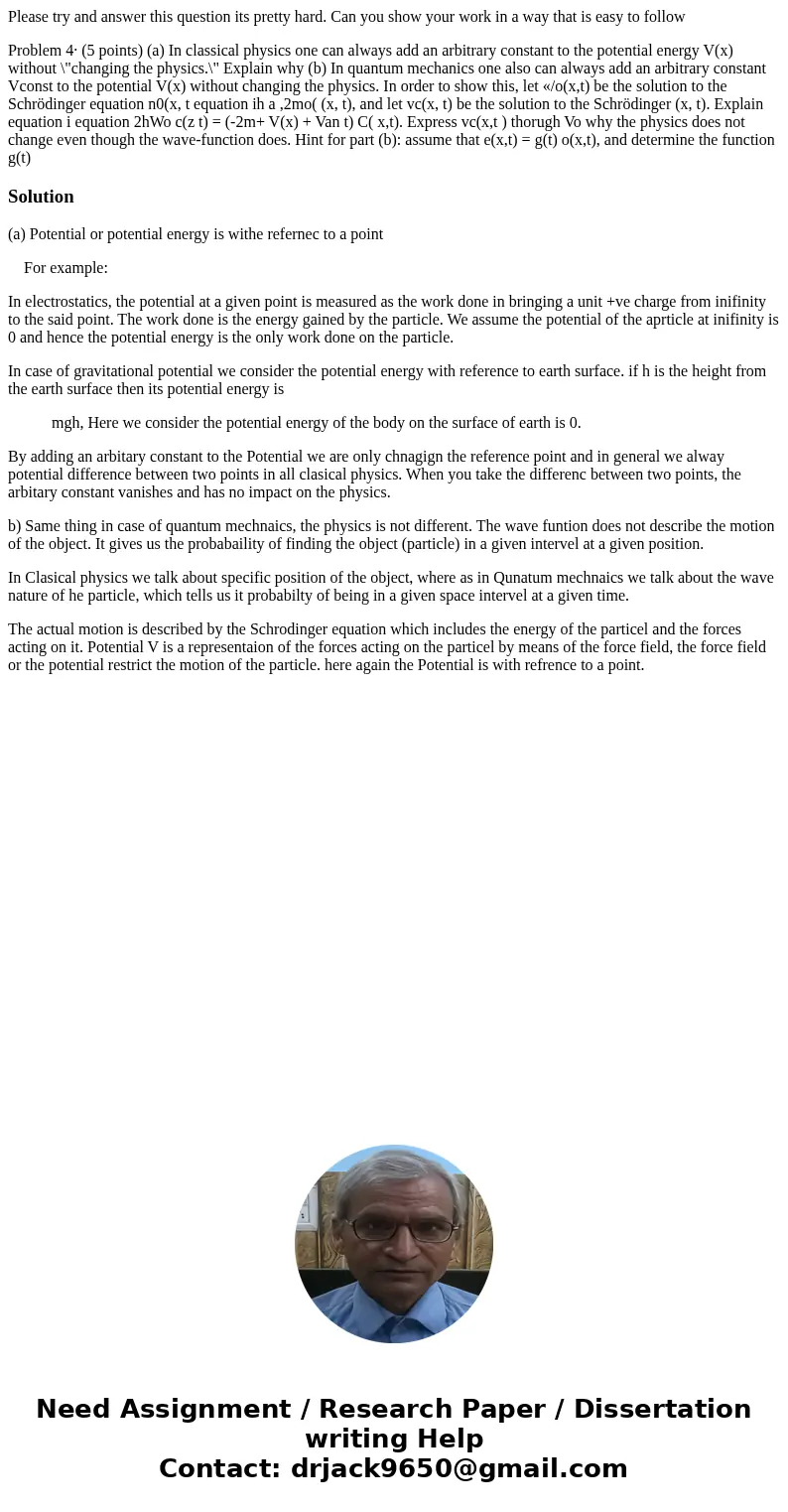Please try and answer this question its pretty hard Can you
Please try and answer this question its pretty hard. Can you show your work in a way that is easy to follow
Problem 4· (5 points) (a) In classical physics one can always add an arbitrary constant to the potential energy V(x) without \"changing the physics.\" Explain why (b) In quantum mechanics one also can always add an arbitrary constant Vconst to the potential V(x) without changing the physics. In order to show this, let «/o(x,t) be the solution to the Schrödinger equation n0(x, t equation ih a ,2mo( (x, t), and let vc(x, t) be the solution to the Schrödinger (x, t). Explain equation i equation 2hWo c(z t) = (-2m+ V(x) + Van t) C( x,t). Express vc(x,t ) thorugh Vo why the physics does not change even though the wave-function does. Hint for part (b): assume that e(x,t) = g(t) o(x,t), and determine the function g(t)Solution
(a) Potential or potential energy is withe refernec to a point
For example:
In electrostatics, the potential at a given point is measured as the work done in bringing a unit +ve charge from inifinity to the said point. The work done is the energy gained by the particle. We assume the potential of the aprticle at inifinity is 0 and hence the potential energy is the only work done on the particle.
In case of gravitational potential we consider the potential energy with reference to earth surface. if h is the height from the earth surface then its potential energy is
mgh, Here we consider the potential energy of the body on the surface of earth is 0.
By adding an arbitary constant to the Potential we are only chnagign the reference point and in general we alway potential difference between two points in all clasical physics. When you take the differenc between two points, the arbitary constant vanishes and has no impact on the physics.
b) Same thing in case of quantum mechnaics, the physics is not different. The wave funtion does not describe the motion of the object. It gives us the probabaility of finding the object (particle) in a given intervel at a given position.
In Clasical physics we talk about specific position of the object, where as in Qunatum mechnaics we talk about the wave nature of he particle, which tells us it probabilty of being in a given space intervel at a given time.
The actual motion is described by the Schrodinger equation which includes the energy of the particel and the forces acting on it. Potential V is a representaion of the forces acting on the particel by means of the force field, the force field or the potential restrict the motion of the particle. here again the Potential is with refrence to a point.

 Homework Sourse
Homework Sourse